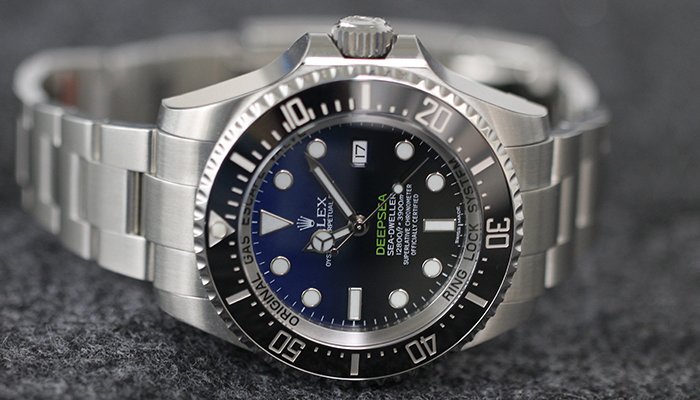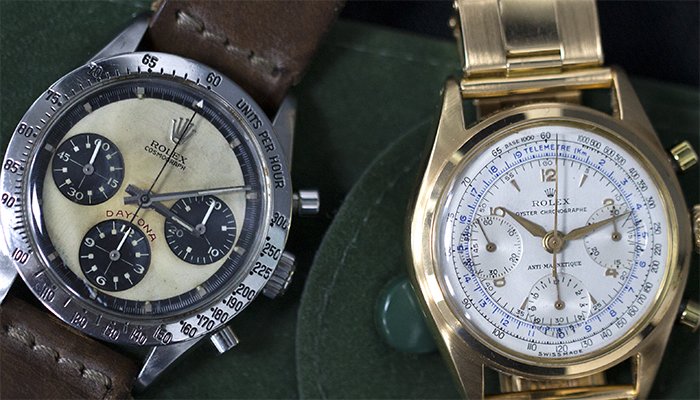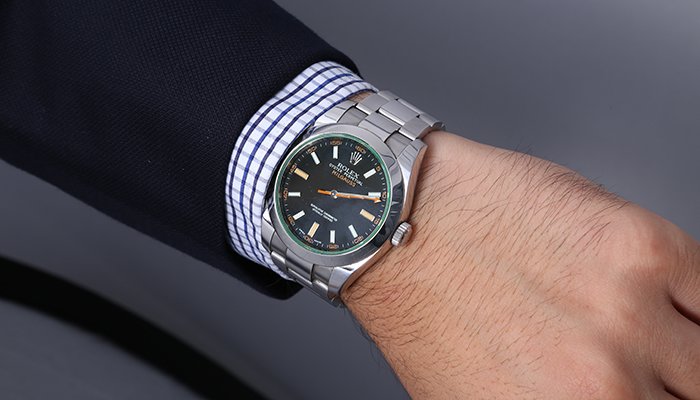Why Watch Enthusiasts Love Rolex
Rolex is undoubtedly the most globally recognized watch company. Since its founding in 1905, the watchmaker has earned its reputation as a highly-respected brand, and over its 112-year lifespan, in some circles, Rolex has become the status symbol for luxury and success.
Now we explore how Rolex grew into the prestigious and highly coveted brand it is today—and why watch aficionados around the world cannot are so in awe.
Heritage & Accomplishments:

The Swiss watchmaker is credited with establishing a host of standards in the fine watch industry. As pioneers in the space, Rolex introduced many significant features including the first water-resistant wristwatch (Rolex Oyster in 1926), the first self-winding watch (1932), the first automatically changing date (Rolex Datejust in 1945), the first water-resistant watch case (Rolex Oyster Perpetual Submariner in 1953), the first dual-time zone function (Rolex GMT Master in 1954) and the first chronometer-certified wristwatch (1914).
This series of significant firsts are not limited only to technical feats; Rolexes are also inextricably linked to historic milestones. When Sir Edmund Hillary became the first man to summit Mount Everest in 1953 (in an expedition sponsored by Rolex), Hillary was wearing a Rolex Oyster Perpetual watch. And in 1960, the Rolex Deep Sea Special was the first wristwatch venture down to the deepest point on Earth, the Mariana Trench.
The spirit of innovation continues to be an integral part of the Rolex brand identity. Many Rolex enthusiasts love the brand’s unique position at the intersection of time-honored tradition and leading edge technology, and to own a Rolex is to become intimately tied with that ongoing legacy.
Novelties and Rarities:

Uncovering a rare model or learning the past of a historic piece is a passion for many Rolex collectors. The smallest detail on a Rolex can mean the difference between an invaluable treasure and a comparative trinket and collectors love to explore the nuances of their favorite models. To wit, with only 20 in the world, the Rolex Cosmograph Daytona “Paul Newman Oyster Sotto” is already a rare find. But even more uncommon is one with a “tropical brown” dial which is the result of a black dial that, over time, changed to brown. This fine detail significantly sways the price of the watch from roughly $100,000 to more than $2M.
Rolex aficionados and collectors in particular become veritable experts on the brand, boning up on game-changing models and debuts, and those little idiosyncrasies that affect the market value. This nearly-obsessive knowledge of Rolex’s history bolsters any collector’s prowess in uncovering those extraordinary timepieces and quickly knowing their appraised worth. And with Rolex’s long past, there are so many different models, reference numbers, and collections to occupy any Rolex buff.
Style & Function:

Rolex watches were originally designed to withstand extreme temperatures, pressures and magnetic fields and daring sports and endeavors like deep-sea diving or flying. Each design is extremely robust and durable without compromising its beautiful design integrity. Rolex has built upon its iconic classics—adding elegant flourishes and incorporating unique materials—while continuing to innovate upon its core technology.
To remove the brand’s storied history, any Rolex watch is fundamentally a gorgeous design. However, it’s ultimately the impressive mix of tradition, style and technical sophistication that fascinates and thrills Rolex devotees.







